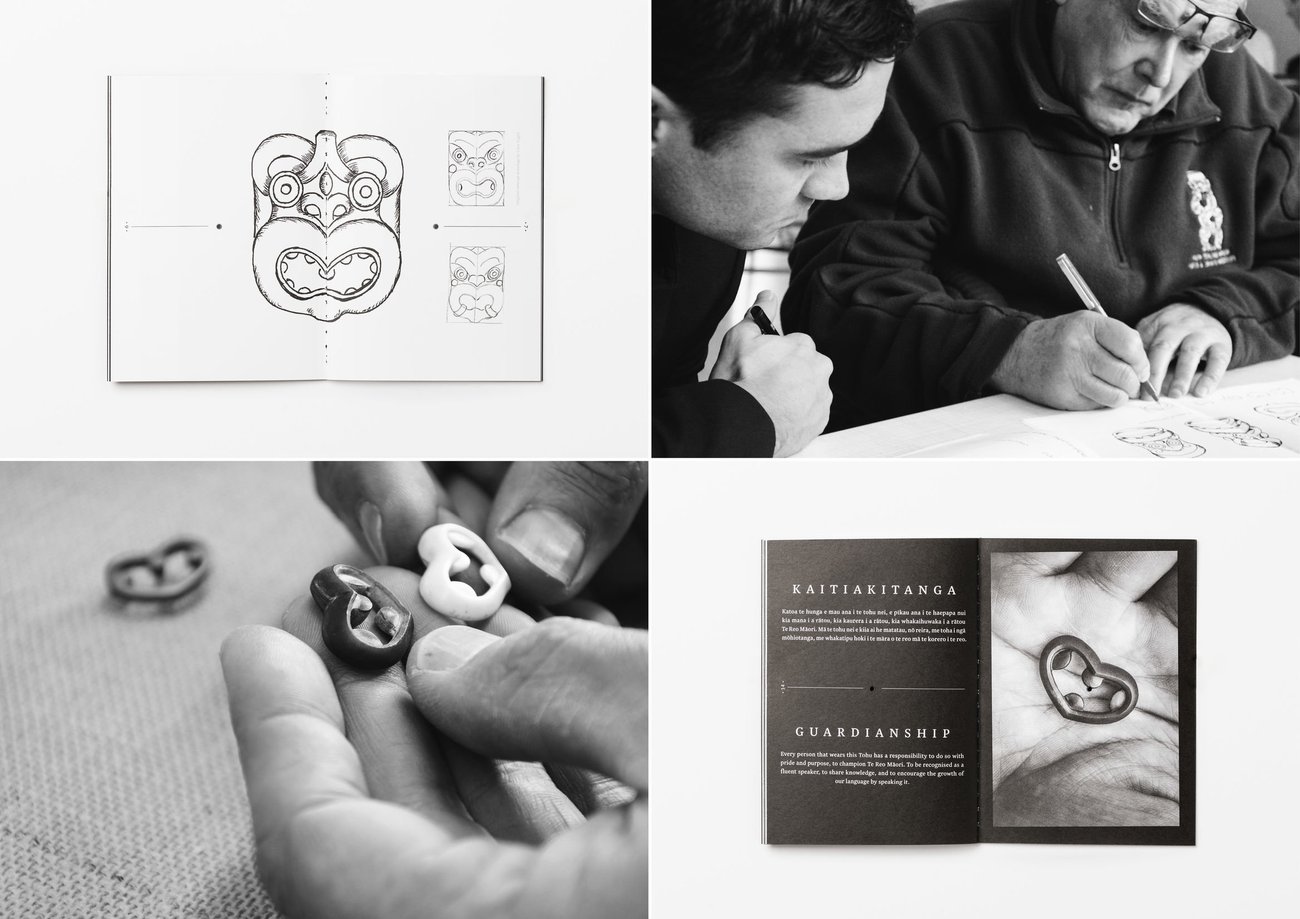Taking Aotearoa to the world with Air New Zealand and Designworks’ Te Tohu


Born out of a common recognition of the importance of Te Reo M?ori, Air New Zealand’s Tohu began as pins meant to be able to identify Te Reo speaking cabin crew, but transformed into something meaningful to everyone in Aotearoa.
Winner of the Ng? Aho Award Purple Pin at this year’s Best Awards, the Designworks design team chose a traditional carver’s approach melded with modern design, with a waha (mouth) meant to signify the oral origins of Te Reo M?ori, while still leaving the overall design open to individual interpretation. Much of the Tohu was designed by expert carver Clive Fugill at the globally renowned New Zealand M?ori Arts and Crafts Institute in Te Puia.
There are a number of interpretations people might have of the design. Individuals may see the waha, a heart, or four people together having a hui (meeting).
Being awarded the Ng? Aho Award Purple Pin means a design needs to have “Aotearoaness” – and this design is all about that. This Tohu is more than a simple badge to identify Te Reo speakers – it’s a symbol to acknowledge the importance of Te Reo M?ori everyone, and the importance that the language and culture does not die out.

Judges described the design as “a beautiful small object with a credible process and big agenda behind it”. The judges commended Air New Zealand for bringing Te Reo M?ori to life on board its flights – both within Aotearoa and around the world – and said the Tohu had the potential to raise awareness of M?ori culture across the globe.
Andrew Baker Air New Zealand’s cultural development manager, says the airline was thrilled with how the Tohu pin designs turned out. “The Tohu was born out of a common recognition of the importance of Te Reo M?ori,” he says. “The Tohu was initially intended as a means of identifying Te Reo speaking Air New Zealand customer-facing employees, however during its development it was quickly recognised as something that could be meaningful to all Air New Zealanders and the wider country as well.”

The process of commissioning and launching the pins took about a year, she says, and involved partnerships with groups including Te Taura Whiri i Te Reo M?ori (the M?ori Language Commission), the New Zealand M?ori Arts and Crafts Institute, and Designworks.
Baker says the design approach was similarly multilayered – and focused on honouring the living past. “The final design bridged the gap between the past and the future,” he says. “We began with a traditional carver’s approach, then applied a modern design lens to it. The design is based on the waha (or the mouth), a sacred gateway for taking in life – breath, food, water – and for sharing our knowledge, our emotions, our aroha. As the origins of Te Reo M?ori are oral, the waha sits at the heart of how the language is used and shared.

“The concept of the waha was explored through a variety of mediums beginning with sketch and wood carving. This initial exploration was then refined digitally and finally was carved in bone and pounamu to ensure it retained its hand-crafted origins. From the final pounamu master mould a series of copper pins were cast and presented to the first recipients.”
Naturally working with so many organisations and stakeholders meant collaboration was key. “The design process was one of collaboration, shared learning and challenge,” says Baker. “The challenge lay in creating a distinct and bold icon that could be identified on a range of scales, while still retaining instantly recognisable M?ori qualities and a rich depth of meaning, heritage and mana.”

Te Taura Whiri i te Reo M?ori chief executive Ngahiwi Apanui says the intention is for the Tohu to be embraced by the wider community eventually. “We are focused on preserving and ensuring a bright future for Te Reo M?ori for all New Zealanders. We would love to see other organisations and community groups embrace the Tohu so it becomes synonymous with Te Reo M?ori speakers throughout the country.”
Te Taura Whiri i te Reo M?ori will be the guardian of the Tohu which will be awarded to eligible Te Reo M?ori speakers who meet the organisation’s criteria for fluency, established by their Whakam?tauria T? Reo M?ori (Level Finder Examinations).

Baker says that design collaboration will hopefully help preserve the very bedrock of Aotearoa’s culture. “The Tohu is not only a symbol to identify Te Reo M?ori speakers, but also one that acknowledges the importance of Te Reo M?ori to us all, and champion its growth and prosperity into the future. This project highlighted the fundamental role that design has to play in protecting and communicating our New Zealand identity.”




